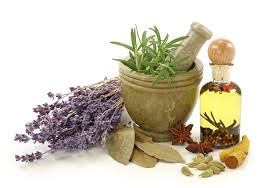homeopathy

n. [临床] 顺势疗法;同种疗法
n.
顺势医疗论,类似医疗论;
英英释义
homeopathy[ ,həumi'ɔpəθi ]
n.a method of treating disease with small amounts of remedies that, in large amounts in healthy people, produce symptoms similar to those being treated
同义词:homoeopathy
双语例句
用作名词(n.)
There is a growing body of research in support of homeopathy.
支持顺势疗法在人身体的研究上正有蓬勃发展的趋势。
权威例句
Trials of homeopathy.Trials of homeopathy.
A critical overview of homeopathy
Evidence of clinical efficacy of homeopathy
[A brief introduction to veterinary homeopathy]
Combined therapy of homeopathy and Su Jok in patients with herpes zoster
A systematic review of systematic reviews of homeopathy
Are the clinical effects of homeopathy placebo effects? A meta-analysis of placebo-controlled trials.
Are the effects of homeopathy placebo effects? A meta-analysis of randomized, placebo controlled trials. Lancet
Systematic reviews of complementary therapies - an annotated bibliography. Part 3: homeopathy.
homeopathy
homeopathy: [19] Greek hómoios meant ‘like, similar’. It was derived from homós ‘same’, a word ultimately related to English same which has contributed homogeneous [17], homonym [17], homophone [17], and homosexual [19] to the English language. Combined with -pátheia, a derivative of Greek páthos ‘passion, suffering’, it produced German homöopathie, which was borrowed by English around 1830. Etymologically, the word means ‘cure by similarity’ – that is, by administering minute quantities of the same substance as caused the disease – and contrasts with allopathy [19], based on Greek állos ‘other’.=> same
homeopathy (n.)
1830, from German Homöopathie, coined 1824 by German physician Samuel Friedrich Hahnemann (1755-1843) from Greek homoios "like, similar, of the same kind" (see homeo-) + -patheia (see -pathy).
1. of or relating to the practice of homeopathy.
属于、关于或实施同种疗法的。
-- 来源 -- 汉英 - 翻译参考
2. For centuries, Russians have practiced the art of honey healing - a local take on homeopathy, where the nutrients of wild herbs and flowers rub off on bees, and eventually find their way into the honey that Russians put in their tea.
俄国人使用蜂蜜疗法已有几百年的历史了,这是当地人采用的同种疗法,那个地方的野生药草和野生花卉中的营养对蜜蜂产生影响,最后营养成份进入到蜂蜜中,俄国人将此蜂蜜放入茶中饮用。
-- 来源 -- 网友提供
3. to believe in homeopathy
认为顺势疗法有效
-- 来源 -- 英汉 - 短句参考
4. Students will study in detail medical acupuncture, homeopathy. osteopathic manipulation and guided imagery.
学生们将详细学习针灸、顺势疗法、骨疗手法以及暗示疗法。
-- 来源 -- 汉英 - 翻译参考
5. "When it was introduced, homeopathy was a mild, welcome alternative to heavy-handed therapies such as bleeding, but it has since been criticized for focusing on symptoms rather than causes. With the rise of alternative medicine, it has seen a resurgence. "
顺势疗法是一种温和的、受欢迎的治疗法,用以代替像放血这类剧烈的疗法,但也有人批评它只注意症状而忽视病因。另类医学兴起后,顺势疗法又复兴起来。
-- 来源 -- 英汉 - 翻译样例 - 生命
6. "Homeopathy: System of therapeutics founded in 1796 by Samuel Hahnemann on the principle that "like cures like."That is, substances that in healthy persons would produce the symptoms from which the patient suffers are used to treat the patient."
顺势疗法:1796年哈内曼提出的一种治疗学方法。其基本原理是「以毒攻毒」,即对患者施予在健康人身上会引起类似该待治病症的物质。
-- 来源 -- 英汉 - 翻译样例 - 生命
